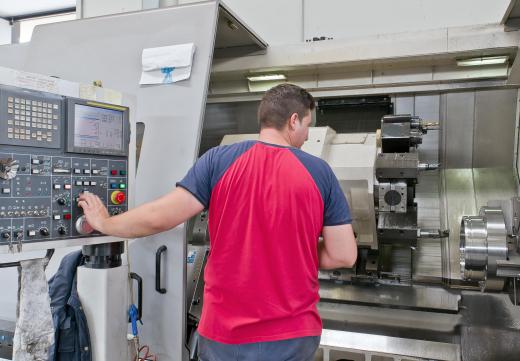A backgauge is a component that is often used with a press brake machine to correctly position work pieces for bending. It can be moved and positioned to allow a press brake to create a variety of complex bends. This can be accomplished because the relative positions of each component can result in a predictable bend position and angle. Backgauges are often used together with a computerized numerical control (CNC) system that can automate the entire process. In some cases backgauges are able to move along seven individual axises, and each is controlled by a different motor.
Press brakes are devices that are used to place precise bends in workpieces such as sheet metal. The plate or sheet of material is positioned over a die and then pressed into it using mechanical, pneumatic, or hydraulic force. Manual units require that each workpiece be positioned by hand. This can be achieved with a practiced eye or by relying on the tooling, but CNC units can automate the entire process.

CNC systems use a variety of optical sensors, robotic components, and computer programming to position workpieces and actuate press brakes and other machining devices. The CNC system typically controls both the backgauge and the press brake, and the operator only needs to slide the workpiece into place. In other setups a robotic arm can perform this function, which allows the operator to turn the machine on and then observe it in case there are any problems.

Each backgauge offers a different range of movement, which can affect the ease of use and precision of the bends. Some backgauges have seven or more axises of movement that the CNC system can control individually. Each axis typically has its own motor that allows the backgauge to slide back and forth in that particular direction. When all of these potential directions are combined, a CNC machine can position a backgauge with a good deal of accuracy.
The way that a backgauge functions is that it is positioned relative to the die so that the workpiece will come into contact with it. A CNC system can use this relative distance to calculate the position of a bend and combine that with the design of the die and duration of the press to achieve a desired angle. The backgauge can then be repositioned so that the same workpiece will contact it differently and receive another bend. This process can facilitate the fabrication of multiple components that all have the same accurate set of bends.
